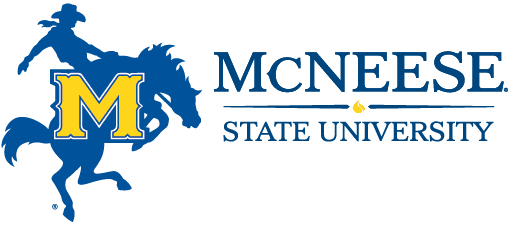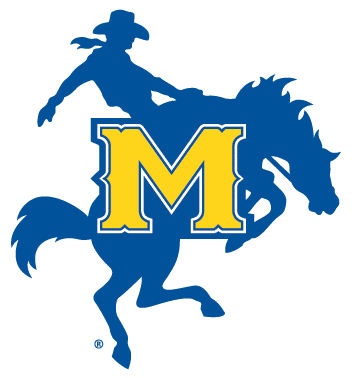Annual Notification
We Change Lives
In order to comply with the Drug Free Schools and Communities Act Amendments of 1989, Public Law 101-226, Executive Order 12564, Public Law 100-71 and subsequent regulations including the Drug-Free Workplace Act this annual notification is being sent. This is also intended to align with the University of Louisiana System regulations regarding alcohol and other drugs. McNeese strives to foster a healthy campus community.
McNeese annually notifies students and staff regarding the Code of Student Conduct as well as the Alcohol and Other Drug Policy. Included in the notification are applicable federal, state, local, and institutional sanctions regarding violation of the Code of Student Conduct and University policies, a description of the long and short-term health risks of substance abuse, and a list of prevention and treatment programs available to students, staff, and faculty.
Link for the Code of Student Conduct:
https://www.mcneese.edu/policy/student-handbook/
Link for the Alcohol and Other Drug Policy:
https://www.mcneese.edu/policy/alcohol-and-other-drug-policy/
All university employees and students are responsible for adhering to the Alcohol and Other Drug Policy. Faculty and staff members who violate this policy are referred to the appropriate unit administrator. Students are referred to the Office of Student Services for disciplinary action. The University President and designees are the ultimate authority responsible for enforcing this policy. Student employees may be held to the standards set for employees of the university.
The University will impose sanctions for violations of state and federal laws, Code of Student Conduct, and university policies. Violators may be punishable by sanctions including referral to counseling and/or a designated rehabilitation program, referral for prosecution, expulsion, disciplinary action and/or termination of employment.
Sanctions:
Potential sanctions for student violations can include verbal or written reprimand, warning or discipline probation, withhold transcript/degree/admission/registration/graduation, bar from University property, restitution, apology, community service, suspension of rights or privileges, counseling/education, suspension of eligibility, failing grade, denial or revocation of degree, suspension (temporary expulsion) and dismissal (permanent expulsion).
Controlled Dangerous Substances SCH I- SCH IV (R.S. 40:981.3)
It is unlawful to possess, sell, distribute, or manufacture drugs listed in the statue. The drugs include, but are not limited to, marijuana, cocaine, “crack” cocaine, methamphetamines, heroin, “rush,” LSD, “ruffies,” and prescription drugs without having obtained a prescription from a licensed physician. Persons found guilty of one of these drug violations are subject to a fine of not less than $500, may be imprisoned at hard labor for up to 30 years or; if found selling illegal drugs on campus, can be imprisoned at hard labor for up to 45 years.
Short/Long-term health risks
Health risks for the abuse of alcohol and use of illicit drugs can include: high blood pressure, cirrhosis of the liver, delirium tremors, deterioration of brain cells, lethargy, depression, irritability and collapse of the heart and other major organ systems, unconsciousness, and vomiting while unconscious which can lead to asphyxiation (death).
Health Risks Associated with Drugs & Alcohol
Alcohol consumption can damage the brain and most body organs. Areas of the brain that are especially vulnerable to alcohol-related damage are the cerebral cortex (largely responsible for our higher brain functions, including problem solving and decision making), the hippocampus (important for memory and learning), and the cerebellum (important for movement coordination).
Marijuana is the most commonly abused illegal substance. This drug impairs short-term memory and learning, the ability to focus attention, and coordination. It also increases heart rate, can harm the lungs, and can increase the risk of psychosis in those with an underlying vulnerability.
Prescription medications, including opioid pain relievers (such as OxyContin® and Vicodin®), antianxiety sedatives (such as Valium® and Xanax®), and ADHD stimulants (such as Adderall® and Ritalin®), are commonly misused to self-treat for medical problems or abused for purposes of getting high or (especially with stimulants) improving performance. However, misuse or abuse of these drugs (that is, taking them other than exactly as instructed by a doctor and for the purposes prescribed) can lead to addiction and even, in some cases, death. Opioid pain relievers, for instance, are frequently abused by being crushed and injected or snorted, greatly raising the risk of addiction and overdose. Unfortunately, there is a common misperception that because medications are prescribed by physicians, they are safe even when used illegally or by another person than they were prescribed.
Inhalants are volatile substances found in many household products, such as oven cleaners, gasoline, spray paints, and other aerosols, that induce mind-altering effects; they are frequently the first drugs tried by children or young teens. Inhalants are extremely toxic and can damage the heart, kidneys, lungs, and brain. Even a healthy person can suffer heart failure and death within minutes of a single session of prolonged sniffing of an inhalant.
Cocaine is a short-acting stimulant, which can lead users to take the drug many times in a single session (known as a “binge”). Cocaine use can lead to severe medical consequences related to the heart and the respiratory, nervous, and digestive systems.
Amphetamines, including methamphetamine, are powerful stimulants that can produce feelings of
euphoria and alertness. Methamphetamine’s effects are particularly long-lasting and harmful to the brain.
Amphetamines can cause high body temperature and can lead to serious heart problems and seizures.
MDMA (Ecstasy or “Molly”) produces both stimulant and mind-altering effects. It can increase body temperature, heart rate, blood pressure, and heart-wall stress. MDMA may also be toxic to nerve cells.
LSD is one of the most potent hallucinogenic, or perception-altering, drugs. Its effects are unpredictable, and abusers may see vivid colors and images, hear sounds, and feel sensations that seem real but do not exist. Users also may have traumatic experiences and emotions that can last for many hours.
Heroin is a powerful opioid drug that produces euphoria and feelings of relaxation. It slows respiration, and its use is linked to an increased risk of serious infectious diseases, especially when taken intravenously. People who become addicted to opioid pain relievers sometimes switch to heroin instead, because it produces similar effects and may be cheaper or easier to obtain.
Steroids, which can also be prescribed for certain medical conditions, are abused to increase muscle mass and to improve athletic performance or physical appearance. Serious consequences of abuse can include severe acne, heart disease, liver problems, stroke, infectious diseases, depression, and suicide.
Drug combinations. A particularly dangerous and common practice is the combining of two or more drugs. The practice ranges from the co-administration of legal drugs, like alcohol and nicotine, to the dangerous mixing of prescription drugs, to the deadly combination of heroin or cocaine with fentanyl (an opioid pain medication). Whatever the context, it is critical to realize that because of drug–drug interactions, such practices often pose significantly higher risks than the already harmful individual drugs. Source: National Institute on Drug Abuse. (2014). Drugs, Brains, and Behavior: The Science of Addiction. Retrieved from (https://www.drugabuse.gov/publications/drugs-brains-behavior-science-addiction/addiction-health
Prevention Programs
Educational and prevention programs are offered through the unit of Student Health & Development, specifically the McNeese Counseling Center, as a means to foster a healthy campus community. Programs include screening events, awareness/educational tabling events, classroom presentations upon request and professionally contracted speaking engagements available to the entire student body. Various other on and off campus resources are invited to collaborate on educational events for the campus community.
Persons who believe they may have a problem with alcohol or other drug use are encouraged to seek help.
Students may receive mental health counseling/consultation through the McNeese Counseling Center (https://www.mcneese.edu/counseling) or 337-475-5136).
Faculty and Staff are encouraged to seek counseling, medical, or substance abuse assistance through their employee insurance; additionally, low cost counseling is available through the Kay Dore Counseling Center on campus for employees who are uninsured.
All within the campus community are encouraged to report concern for students with alcohol or drug problems or inappropriate conduct involving alcohol or drugs by using the reporting forms located at https://www.mcneese.edu/studentservices/reporting.
TOLL FREE INFORMATION
Substance Abuse Helpline:
1-800-662-HELP (4357)
Narcotics Anonymous (Lake Charles):
(337)439-5753
Lake Charles Office of Behavioral Health:
(337)475-8022
Calcasieu Parish Sherriff’s Office:
Non-emergency: (337)491-3600
Emergency: 911
National Council on Alcohol and Drug Dependency:
1-800-NCA-CALL (622-2255) for referrals to local treatment facilities.
Link to local resources including housing, food/shelter, mental health facilities https://www.mcneese.edu/studentservices/resources/

